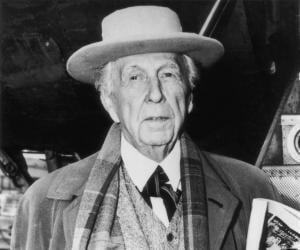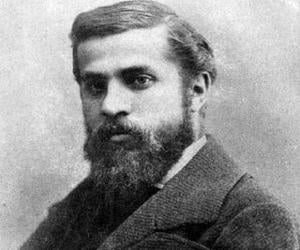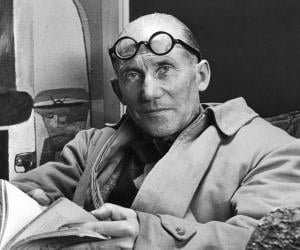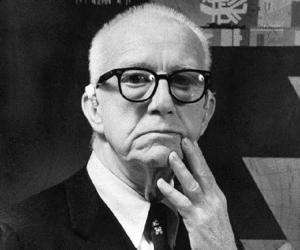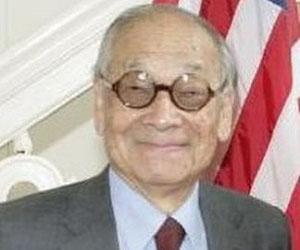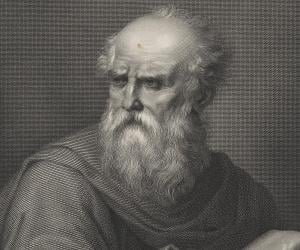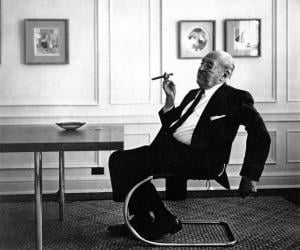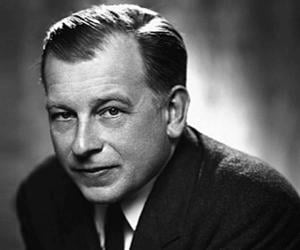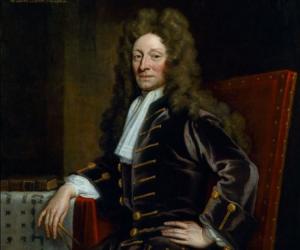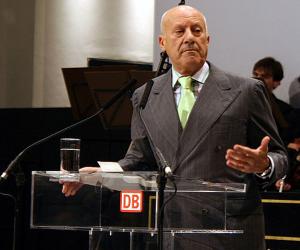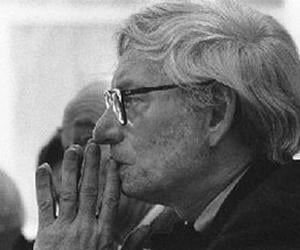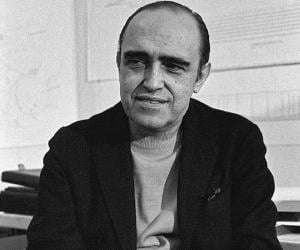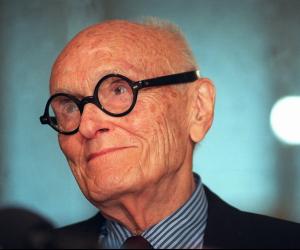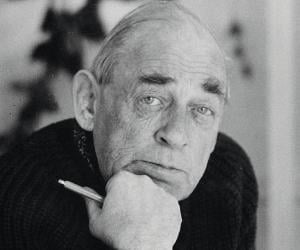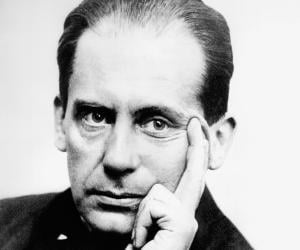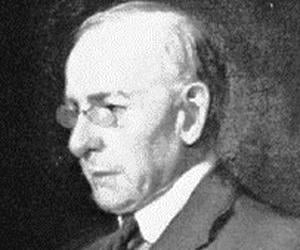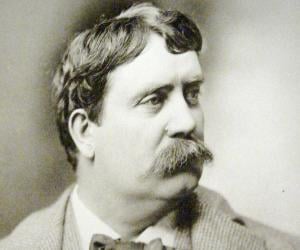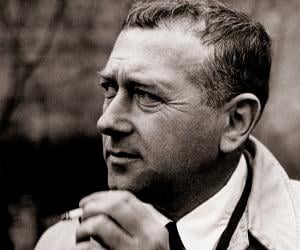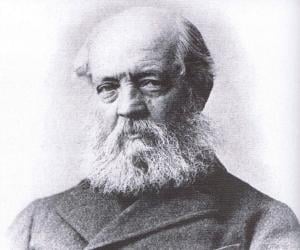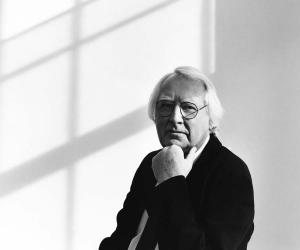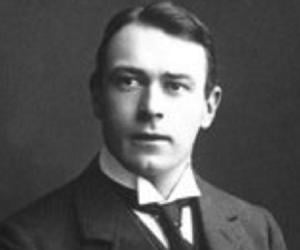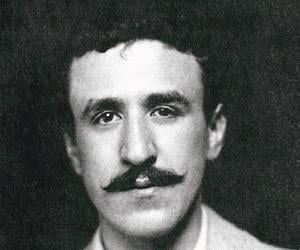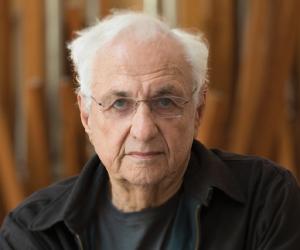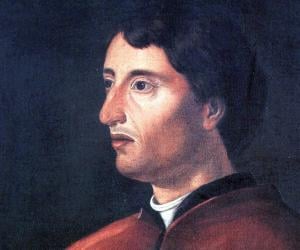Frank Lloyd Wright was an American architect who designed over 1,000 structures in a career spanning 70 years. A pioneer of organic architecture, Wright influenced three generations of architects by playing a critical role in the 20th century's architectural movements. His structure Fallingwater is called America's best architectural work and Wright is considered the greatest architect America has ever produced.
Le Corbusier was a Swiss-French designer, painter, architect, writer, and urban planner. He was one of the pioneers of modern architecture. During his illustrious career, which spanned 50 years, Le Corbusier designed buildings in India, Japan, Europe, and North and South America. He is also credited with revolutionizing urban planning.
Buckminster Fuller was an American systems theorist, architect, designer, inventor, author, and futurist. He is credited with popularizing the geodesic dome, which resembles carbon molecules known as fullerenes. Fullerenes were named after Fuller for their resemblance to geodesic spheres. Fuller's work has influenced several personalities from different walks of life. His work has also inspired a couple of documentary films.
I. M. Pei was a Chinese-American architect who drew inspiration from the garden villas at Suzhou when he was young. He is credited with founding I. M. Pei & Associates, an independent design firm, in 1955. Today, the award-winning firm is known by the name, Pei Cobb Freed & Partners. Pei is known for designing structures like the Mesa Laboratory.
Roman architect Vitruvius, believed to have served as a military engineer for Caesar’s army, is best remembered for his iconic work On Architecture, which consists of 10 parts, each detailing topics such as construction of temples, public buildings, and others. His book remains a vital treatise on ancient classical architecture.
Ludwig Mies van der Rohe was a German-American architect. He is widely considered one of the many pioneers of modernist architecture. After emigrating to the United States, Mies worked on structures like the Promontory Apartments. He is best remembered for serving as the director of a popular German art school named the Bauhaus before its closure in 1933.
Eero Saarinen was a Finnish-American industrial designer and architect best remembered for his impressive designs for monuments and buildings. He is credited with designing important structures, such as the Washington Dulles International Airport, the TWA Flight Center, and the Gateway Arch. He is widely regarded as one of the 20th-century's most prominent American architectures.
Architect Sir Christopher Wren had built over 50 churches in London, the most popular of them being the St. Paul’s Cathedral. He was a major force behind the formation of the Royal Society and was also knighted for his achievements. He was also a member of the English Parliament.
Norman Foster is an English designer and architect best known for his association with the progression of high-tech architecture. Regarded as an important personality in British modernist architecture, Foster has been granted several prestigious honors like The Lynn S. Beedle Lifetime Achievement Award. He also serves as the president of the Norman Foster Foundation which aims at helping young architects.

Pritzker Prize-winning Italian architect Renzo Piano was born into a family of builders from Genoa. His firm Piano and Rogers, was co-established with British architect Richard Rogers. The Renzo Piano Building Workshop worked on a number of museum commissions, most notably those of Menil Collection.
Louis Kahn was an American architect who is credited with creating a style that was monolithic and monumental. Regarded as one of the 20th century's most influential architects, Kahn served as a professor at Yale School of Architecture and at the University of Pennsylvania's School of Design. His life and career inspired a documentary titled My Architect: A Son's Journey.
Philip Johnson was an American architect who organized the Modern architecture's first exhibition at the Museum of Modern Art in 1932. A highly influential and respected architect, Johnson was honored with the prestigious AIA Gold Medal in 1978. The following year, he was honored with the first Pritzker Architecture Prize.
Finnish architect Alvar Aalto initially had his studies interrupted by the Finnish Civil War, which saw him fighting for the White Army. His first architectural design was for his parents’ house. He had experimented with furniture and glassware, too. His works showcase a move from classicism to functionalism.
Walter Gropius was a German architect. Along with Ludwig Mies van der Rohe, Alvar Aalto, and Frank Lloyd Wright, he is regarded as a pioneer in modernist architecture. Gropius founded the Bauhaus School. The large-scale housing projects he designed in Berlin, Karlsruhe, and Dessau in the late 1920s and early 1930s became major contributions to the New Objectivity movement.

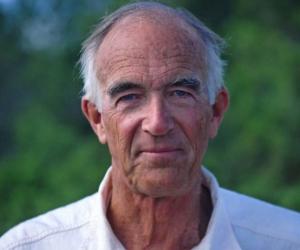
Louis Sullivan was an architect who became only the second person to be honored with a posthumous AIA Gold Medal. Dubbed the father of modernism and the father of skyscrapers, Sullivan contributed immensely to the Chicago School of architecture. He is also credited with mentoring Frank Lloyd Wright who went on to become a respected architect in his own right.

Santiago Calatrava Valls is a Spanish architect and a structural engineer, internationally known for his sculptural bridges and buildings. Beginning his career in Zurich, building industrial and transportation structures, he soon became famed for his extraordinary designs and began to receive commissions from abroad, designing and building marvelous bridges, stadiums, museums, railway stations, airports, office buildings all over the world.
American architect Daniel Burnham was one of the pioneering designers of the skyscrapers that populate cities such as Chicago. Part of the Beaux-Arts movement, he had been the director of the World’s Columbian Exposition. He also formed his own firm, Burnham & Root with John Wellborn Root.
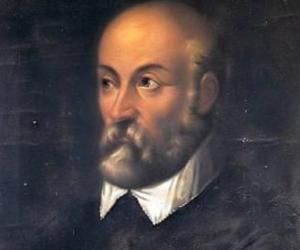
Andrea Palladio was an Italian architect remembered for designing villas, country houses, palaces, and churches. Widely regarded as one of the most influential architects in the history of architecture, Palladio designed 23 buildings in Vicenza and 24 villas in Veneto. Together, they are known as the City of Vicenza and the Palladian Villas of the Veneto as named by UNESCO.
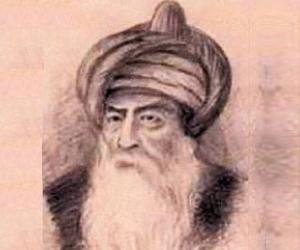
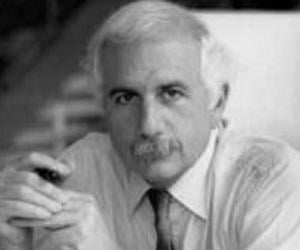
Moshe Safdie is an architect, educator, urban planner, author, and theorist. He is best known for designing Jewel Changi Airport, Marina Bay Sands, and Habitat 67. Widely regarded as a thought leader, Safdie's work has inspired generations of architects all around the world.
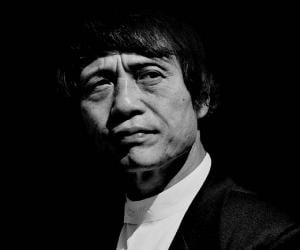
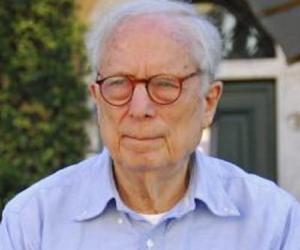
Robert Venturi was an American architect who founded the successful architectural firm, Venturi, Scott Brown and Associates. One of the 20th century's leading architectural figures, Venturi helped shape the way that students, planners, and architects think about architecture. Renowned for designing buildings like the Vanna Venturi House, Robert Venturi was honored with the prestigious National Medal of Arts in 1992.
Frederick Law Olmsted was an American journalist, landscape architect, public administrator, and social critic. Dubbed the father of American landscape architecture, Frederick was responsible for co-designing several well-known urban parks including Walnut Hill Park, Prospect Park, Cadwalader Park, and Central Park. He is also remembered for his work on the landscape encircling the US Capitol building.
Richard Meier is an American architect and abstract artist who is credited with designing many iconic buildings, such as the San Jose City Hall, the Barcelona Museum of Contemporary Art, and the Getty Center, Los Angeles. Over the years Richard Meier has won several prestigious awards like the Pritzker Prize and the American Academy of Achievement's Golden Plate Award.
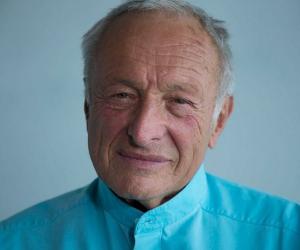
Richard Rogers is an Italian-British architect best known for his functionalist and modernist designs in high-tech architecture. Rogers is recognized for his work on popular buildings like Lloyd's building in London, the Pompidou Centre in Paris, and the building of the European Court of Human Rights in Strasbourg. He is the recipient of many awards, including the Thomas Jefferson Medal.
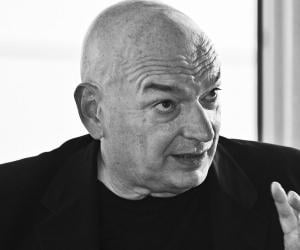
Jean Nouvel is a French architect who was a founding member of Syndicat de l'Architecture, a labor union for architects. He studied at the École des Beaux-Arts and entered into a partnership with François Seigneur. He built a brilliant career and is the recipient of several prestigious awards, including the Pritzker Prize, architecture's highest honor.
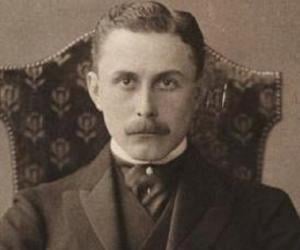
Austrian architect Adolf Loos is often compared to American architect Frank Lloyd Wright in terms of his contribution. Loos believed architecture shouldn’t contain the extra elements and ornaments promoted by Art Nouveau. Mostly known for his residential projects, he built modern buildings such as the Goldman and Salatsch Building.
Charles Rennie Mackintosh was a Scottish architect, designer, and artist. He was married to fellow artist Margaret Macdonald, and they both were influential on the European design movements Art Nouveau and Secessionism. Mackintosh is considered one of the most important figures of Modern Style (British Art Nouveau style). In his later years, he worked largely as a watercolorist.
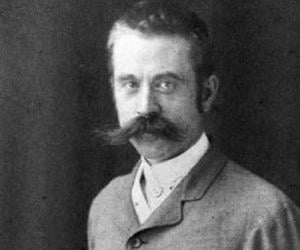
Stanford White was an American architect who designed several important monuments including the Washington Square Arch. He also helped construct Nikola Tesla's Wardenclyffe Tower, which happens to be his last design. Although White was an influential and prominent designer of his time, he is best remembered for his illicit relationship with Evelyn Nesbit which has inspired several works of art.
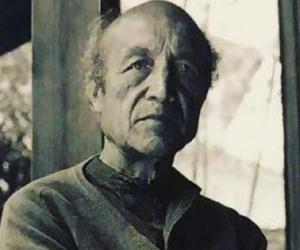
Isamu Noguchi was an American landscape architect and artist best remembered for designing the iconic Noguchi table. His sculptures are credited with bridging East and West and some of his works are considered landmarks of 20th-century art. In 1982, he won the Edward MacDowell Medal. In 1987, he received the National Medal of Arts for his contribution to the arts.
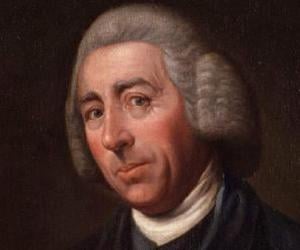
Capability Brown was an English landscape architect and gardener. Regarded as the most popular figure in English landscape garden style history, Brown is also considered England's greatest gardener by many. Capability Brown is credited with designing more than 170 parks. His work had such an impact that the contributions of his predecessors William Kent and Charles Bridgeman are often overlooked.

Initially a sweeper at Andy Warhol's Factory, Jed Johnson later also edited some of Warhol’s films. He later drifted to interior designing and partnered with fellow architect Alan Wanzenberg on many designs. He died at 47, when a Trans World Airlines flight he was traveling in, crashed.
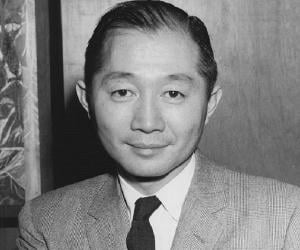
Architect Minoru Yamasaki was known for his signature style that was far removed from austerity of modern architecture. He is best remembered for designing New York’s famed World Trade Center, or the Twin Towers, destroyed later in the 9/11 terrorist attacks. He had previously worked as a draftsman and an engineer.
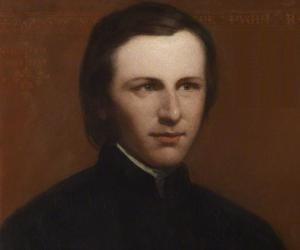
Augustus Pugin was an English designer, architect, artist, and critic. He is best remembered for his contribution to the Gothic Revival style of architecture. He is credited with designing the interior of the popular Palace of Westminster in London as well as the palace's iconic clock tower. Augustus Pugin also designed the Alton Castle in Staffordshire.
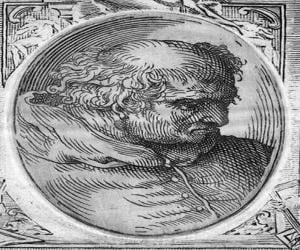
Donato Bramante was an Italian painter and architect. He is credited with introducing the High Renaissance style to Rome and Renaissance architecture to Milan. Bramante is also credited with planning the structure of St. Peter's Basilica, which was later executed by Michelangelo. Bramante is also remembered for designing buildings like Santa Maria presso San Satiro and Santa Maria delle Grazie.

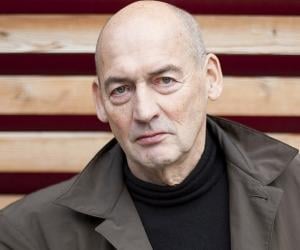
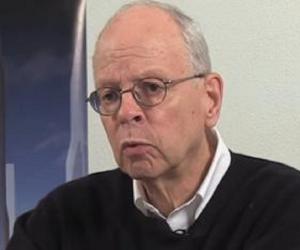
Architect and chairman of Skidmore, Owings & Merrill, David Childs is best known as the designer of the One World Trade Center in New York. While he initially studied zoology, he later deviated to architecture. His projects also include the Changi Airport in Singapore and the National Geographic headquarters.
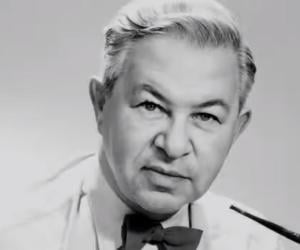
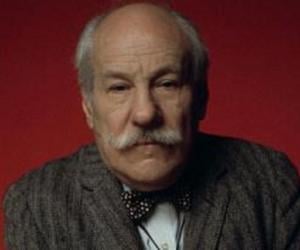
Barnett Newman was an American artist widely regarded as one of the most prominent figures in abstract expressionism. Although his work was unappreciated for much of his life, it served as a major influence on several younger artists like Bob Law, Frank Stella, and Donald Judd.
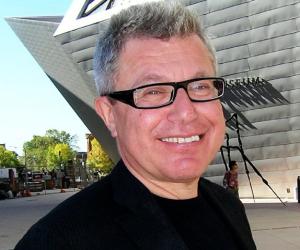
Daniel Libeskind had initially moved to New York on a music scholarship. However, he later deviated to architecture and also taught for a while. One of his most celebrated designs is the Jewish Museum in Berlin. He also won a contest for a proposed design for rebuilding the World Trade Center.
